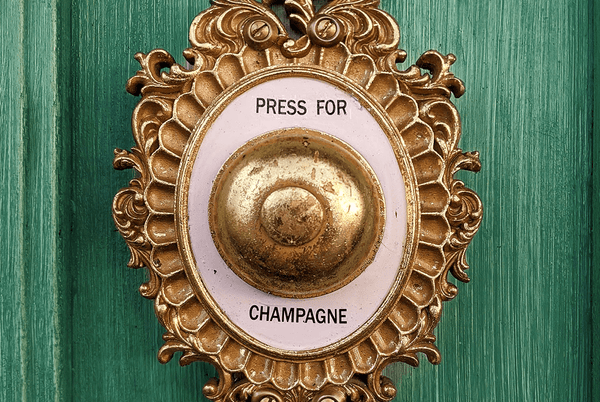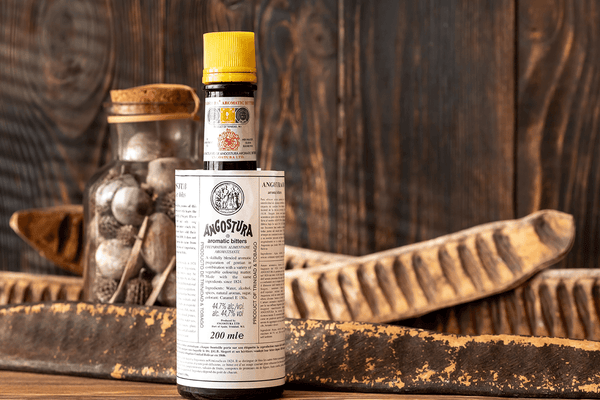THE BEST WHEATED BOURBONS
In the ever-growing world of whiskey, America's love affair with bourbon has led to distillers continuously evolving their recipes to create new taste experiences. One area that has seen a growth in popularity, and hence an increase in availability, is wheated bourbon...

As you browse the whiskey shelves of your liquor store or bar, you might find it difficult to spot the term “wheated bourbon” on any labels. There's no requirement for distillers to label their wheated bourbon as such, and many choose not to. While bourbon aficionados will know exactly what to look for, the less initiated might need a little guidance from the store manager or bartender. But once you discover wheated bourbon, its mellow and smooth qualities will have you coming back for more.
What Is Wheated Bourbon?
While the primary grain used to make all bourbon is corn, most distillers use rye as the secondary flavor grain, along with a small quantity of malted barley. In wheated bourbon, the rye is replaced by wheat to create a distinctive flavor, which is milder and less spicy than rye bourbon. Wheated bourbon must be made according to the same strict regulations as any other bourbon.
All bourbon must be made in the U.S. from a mash bill with no less than 51% corn, but the distilleries can use any combination of grains for the other 49%. Most will add rye, barley, and more corn. The rye imparts a bold, spicy, and peppery flavor. But the rye can be replaced by other grains such as wheat, although some distillers use more exotic grains.
You might find bourbons with buckwheat, oats, quinoa, rice, or sorghum, each with its own unique flavor characteristics. Others create a four-grain bourbon with a mash bill containing corn, rye, wheat, and barley for a sweet and spicy flavor. Rabbit Hole Distillery's Cavehill four-grain bourbon is made of corn, malted wheat, malted barley, and honey malted barley to give it hints of honey, spice, fruit, and toasted grain.
In wheated bourbon, substituting the rye with wheat gives the whiskey a milder and sweeter flavor profile. The sweetness of the corn combines with the gentle qualities of the wheat to create a complexity not found in other grain blends. You may notice fruity and floral flavors with notes of caramel and honey, while the cask aging adds notes of oak and vanilla. Whatever the grain mix, bourbon must be matured in unused charred oak barrels.
The flavor characteristics of a wheated bourbon are not just down to the percentage of wheat used in the mash bill. Geographical, seasonal, and farming factors can all play their part. Where the wheat is grown, the type of soil, the growing season, and when it's harvested can all affect the attributes of the crop. However, the overriding influence on the flavor of wheated bourbon is from the charred barrel.
Malted Barley and Wheated Bourbon
To understand the importance of malted barley, we need to get a little technical. Wheat is one of the most cultivated crops in the world. It has closely packed proteins that make it a superb source of nourishment. However, during the fermentation process, the yeast struggles to access the long starch molecules within the proteins to convert their sugars into alcohol. The yeast can only produce alcohol from short sugar molecules.
Before you can make alcohol from grain starch, it needs to be broken down into smaller monosaccharide and disaccharide sugar molecules that are easily converted into alcohol by the yeast. In nature, plants have a way of doing this for themselves.
In the early stages of growth, grains naturally release enzymes that break down the starch into the short sugar molecules that help the seeds to germinate. The sugars provide the energy the plant needs to establish its roots and leaves until it is big enough to use photosynthesis for growth.
The earliest distillers discovered that this natural process could be reproduced by malting grains to release those enzymes. Certain grains, such as malted barley, contain sufficient enzymes to break down their own starches, along with those of the other grains, like wheat, that are put into the bourbon mash with them.
Wheated bourbon can be made without malted barley because American distilleries are allowed to use laboratory-made enzymes during fermentation. Chemicals such as Amylex and Diazyme are illegal in Scottish whisky production, but they are permitted in America, enabling bourbon distillers to forgo the use of malted barley in the traditional way.
What's the Difference Between Wheated Bourbon and Wheat Whiskey?
To be called bourbon, the whiskey must be made in the U.S. with a mash bill of at least 51% corn and be aged in new charred oak casks. Wheated bourbon uses a significant percentage of wheat as the secondary flavoring grain in the mash bill in the place of rye.
Wheat whiskey is made to similar strict standards as bourbon, but the mash bill must contain no less than 51% wheat instead of corn. The other 49% of the mash bill can be made up of the distiller's choice of grains.
Rabbit Hole Dareringer
Rabbit Hole Dareringer straight bourbon whiskey is a wheated bourbon created from a mash bill of 68% corn, 18% wheat, and 14% malted barley. After being aged in toasted and charred new oak barrels, the bourbon is rested in handmade Pedro Ximenez (PX) sherry casks from Spain.
Dareringer is bottled at 93 proof (46.5% ABV). The result of this careful process is a smooth drinking bourbon with an intoxicating aroma of sherry, along with hints of cherry and caramel. It offers subtle flavors of currants and raisins, with traces of vanilla and almond for a light and slightly dry finish.
When you're venturing into the world of wheated whiskey, whether you're a novice or a seasoned bourbon drinker, put Rabbit Hole Dareringer at the top of your list. It might not have the term “wheated” on the label, but its easy-drinking character will leave you in no doubt, and you might never look back.






